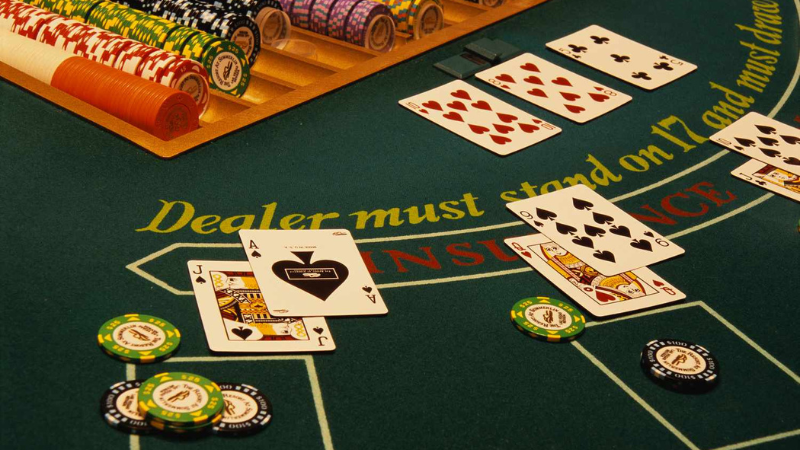Gambling can be a thrilling and fun way to pass the time, but it’s essential to know how to manage your bankroll properly to avoid significant losses. Bankroll management is the foundation of responsible gambling, ensuring that you can play responsibly without risking more than you can afford to lose.
In this post, we’ll guide you through the basics of managing your bankroll, whether you’re playing at a land-based casino, online casino, or sports betting.
What is Bankroll Management?
Bankroll management refers to the process of setting a budget for your gambling activities and sticking to it. It helps you control your spending, reduce the risk of financial loss, and ensures that you can enjoy gambling without it negatively affecting your personal finances.
Good bankroll management is all about making smart decisions about how much money you’re willing to wager and setting limits to protect yourself from excessive losses.
Set a Gambling Budget
The first step in effective bankroll management is setting a budget. Before you start gambling, decide how much money you can afford to lose without it affecting your daily life or financial goals. This amount should be separate from any essential expenses, like rent, bills, or savings.
A good rule of thumb is to only gamble with money you can afford to lose. This ensures that you won’t feel financial stress if things don’t go your way.
Break Your Budget Into Sessions
Once you’ve set your overall gambling budget, it’s helpful to break it down into smaller amounts for each gambling session. For example, if you’ve set a monthly budget of $500, divide it into weekly or daily amounts depending on how often you plan to gamble. This approach ensures that you don’t blow your entire bankroll in one sitting.
By limiting your spending to a set amount per session, you can extend your playtime and enjoy the experience without the pressure of losing everything too quickly.
Set Win and Loss Limits
Another important aspect of bankroll management is setting win and loss limits. These limits help you avoid getting carried away when you’re on a hot streak or chasing losses when you’re having a bad run.
- Win Limit: Set a goal for how much you’d like to win in a session. Once you hit this target, consider walking away from the game to lock in your profits. This helps prevent overconfidence and excessive gambling.
- Loss Limit: Similarly, establish a loss limit that you’re willing to accept in a session. If you reach this amount, stop playing for the day. It’s better to cut your losses and come back another time than to continue gambling in hopes of recouping losses.
Setting both win and loss limits keeps your emotions in check and helps you maintain control over your bankroll.
Avoid Chasing Losses
Chasing losses is one of the most common mistakes gamblers make. When you lose money, the temptation to keep gambling in an attempt to win it back can be overwhelming. However, chasing losses often leads to more losses and can drain your bankroll quickly.
Instead of trying to recover losses, stick to your set loss limit and walk away when you’ve hit it. Remember, gambling is meant to be fun, and it’s important to approach it with a long-term perspective. There will always be another day to play, but chasing losses will likely leave you frustrated and out of money.
Bet Within Your Means
When gambling, always bet within your means. Avoid placing high bets that could wipe out your bankroll in a single round, especially when you’re just starting. Smaller bets allow you to extend your playing time and give you more opportunities to win.
For example, if you have a $500 bankroll, betting $5 per hand in blackjack or $1 per spin on a slot machine ensures that you can play for a longer period and enjoy the experience. The key is to balance your bets with the amount you’re willing to lose and keep the excitement of the game alive.
Use the 1-2% Rule
One of the best guidelines for managing your bankroll is the 1-2% rule. This means that you should never bet more than 1-2% of your total bankroll on a single bet. For example, if you have a $1,000 bankroll, your individual bets should be no higher than $10-$20.
This strategy helps you manage risk and ensures that you have enough funds to keep playing even if you experience a losing streak. Betting small amounts also gives you more opportunities to learn and improve your game.
Choose Games with Low House Edge
Different casino games have different house edges, which refers to the built-in advantage the casino has over players. Games with a lower house edge give you a better chance of winning, which helps protect your bankroll.
For example, blackjack, video poker, and baccarat tend to have a lower house edge compared to games like slots or roulette. If you want to make your bankroll last longer, focus on games with better odds.
You can also do some research to find out which variations of certain games offer the best odds. For example, blackjack variations with fewer decks and favorable rules have a lower house edge.
Take Advantage of Bonuses and Promotions
Online casinos and sportsbooks often offer bonuses and promotions that can boost your bankroll. These bonuses may include:
- Welcome bonuses for new players
- Free spins on slots
- Reload bonuses for depositing more funds
- Cashback offers for losses
By using these promotions wisely, you can increase your available funds and extend your playtime without risking your own money. However, always read the terms and conditions to ensure the bonus is worth it and that you can meet the wagering requirements.
Keep Track of Your Gambling Activity
To effectively manage your bankroll, it’s important to track your gambling activity. Keep a record of your wins and losses so you can evaluate your performance over time. Tracking your sessions also helps you identify patterns and adjust your strategy accordingly.
You can keep a simple notebook or use an app to log your gambling sessions. This allows you to stay accountable and make smarter decisions moving forward.
Know When to Walk Away
One of the most important aspects of bankroll management is knowing when to walk away. Whether you’re on a winning streak or having a rough day, it’s crucial to recognize when it’s time to stop. If you’ve reached your loss limit or achieved your win target, it’s better to leave the game and come back another time.
Walking away allows you to maintain control over your bankroll and ensures that you don’t end up losing more than you intended.
Final Thoughts
Bankroll management is key to enjoying gambling responsibly and increasing your chances of having a positive experience. By setting a budget, sticking to betting limits, avoiding the temptation to chase losses, and taking advantage of promotions, you can ensure that gambling remains fun and within your control.
Remember, gambling should be an enjoyable pastime, and managing your bankroll effectively is the best way to keep it that way. Play smart, stay disciplined, and always gamble responsibly!



